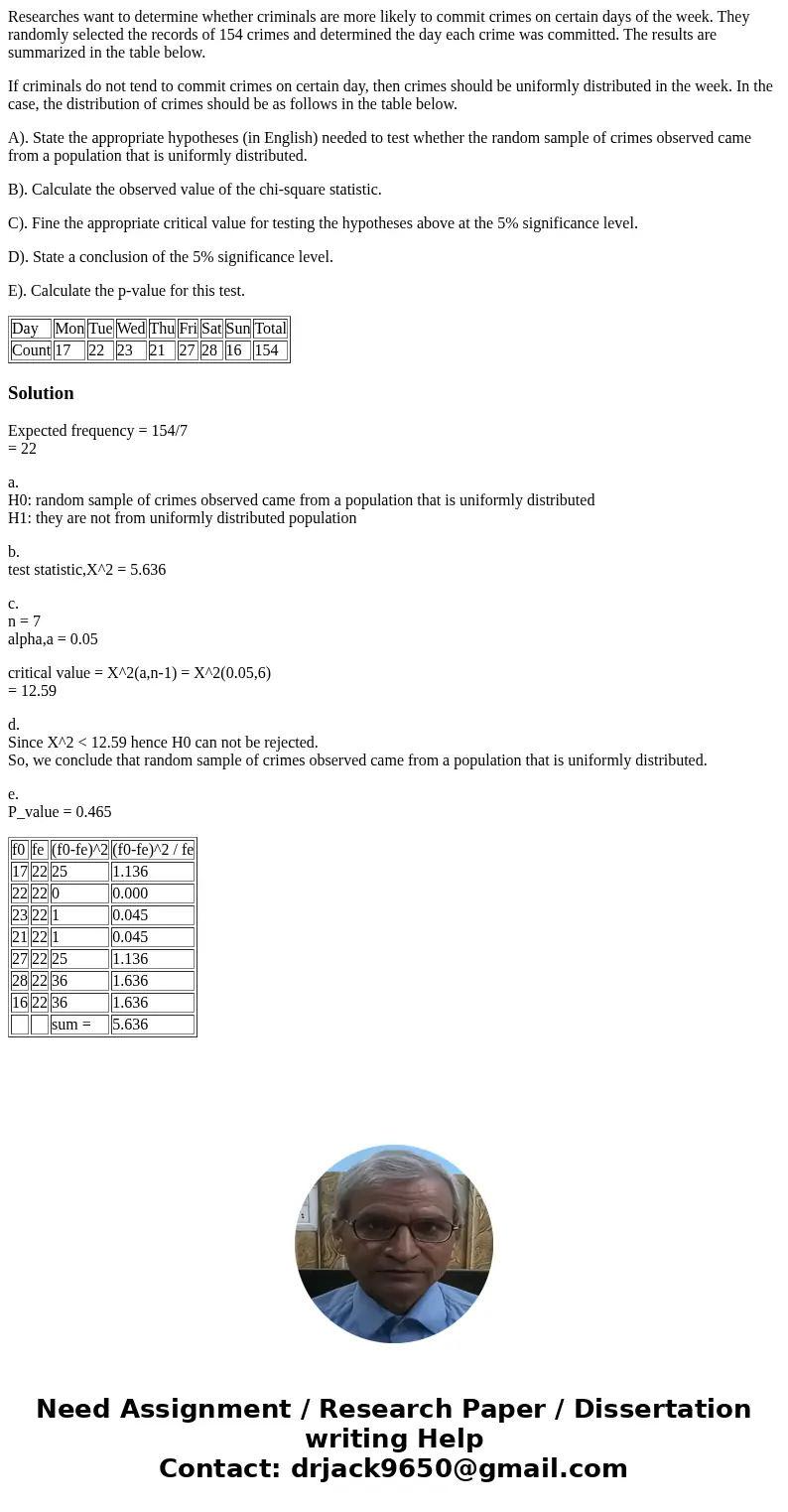Researches want to determine whether criminals are more like
Researches want to determine whether criminals are more likely to commit crimes on certain days of the week. They randomly selected the records of 154 crimes and determined the day each crime was committed. The results are summarized in the table below.
If criminals do not tend to commit crimes on certain day, then crimes should be uniformly distributed in the week. In the case, the distribution of crimes should be as follows in the table below.
A). State the appropriate hypotheses (in English) needed to test whether the random sample of crimes observed came from a population that is uniformly distributed.
B). Calculate the observed value of the chi-square statistic.
C). Fine the appropriate critical value for testing the hypotheses above at the 5% significance level.
D). State a conclusion of the 5% significance level.
E). Calculate the p-value for this test.
| Day | Mon | Tue | Wed | Thu | Fri | Sat | Sun | Total |
| Count | 17 | 22 | 23 | 21 | 27 | 28 | 16 | 154 |
Solution
Expected frequency = 154/7
= 22
a.
H0: random sample of crimes observed came from a population that is uniformly distributed
H1: they are not from uniformly distributed population
b.
test statistic,X^2 = 5.636
c.
n = 7
alpha,a = 0.05
critical value = X^2(a,n-1) = X^2(0.05,6)
= 12.59
d.
Since X^2 < 12.59 hence H0 can not be rejected.
So, we conclude that random sample of crimes observed came from a population that is uniformly distributed.
e.
P_value = 0.465
| f0 | fe | (f0-fe)^2 | (f0-fe)^2 / fe |
| 17 | 22 | 25 | 1.136 |
| 22 | 22 | 0 | 0.000 |
| 23 | 22 | 1 | 0.045 |
| 21 | 22 | 1 | 0.045 |
| 27 | 22 | 25 | 1.136 |
| 28 | 22 | 36 | 1.636 |
| 16 | 22 | 36 | 1.636 |
| sum = | 5.636 |

 Homework Sourse
Homework Sourse